Nepal’s calendar year of festivals has a lovely line-up of showy extravaganzas of its spiritual and cultural traditions most travelers are familiar with. But there are some which have not always shared that spotlight, but are intrinsic to the fabric of its centuries-old community conventions. Drawn from myths and folklore, spiritual values and beliefs, rites and rituals, the colorful kaleidoscope of these less trumpeted festivals provide invaluable insights into Nepal’s heterogeneous societal culture.
What the traveler will discover here are several festivals which are powered by their ethnic moorings. There are some which uniquely are linked to animal worship or celebrate their connection with humans; there are some which simply speak of the deeply embedded cross-cultural ethos of veneration driven by shared values and the symbolic representations of a common deity which is the object of worship. While the Dashain, Tihar, Maha Shivaratri, Teej and Holi festivals are cause for celebration across the country, there are some really exciting festivals which are observed by various communities, such as the Sherpas, Tharus, Thakalis and Gurungs.
Losar, Khumbu
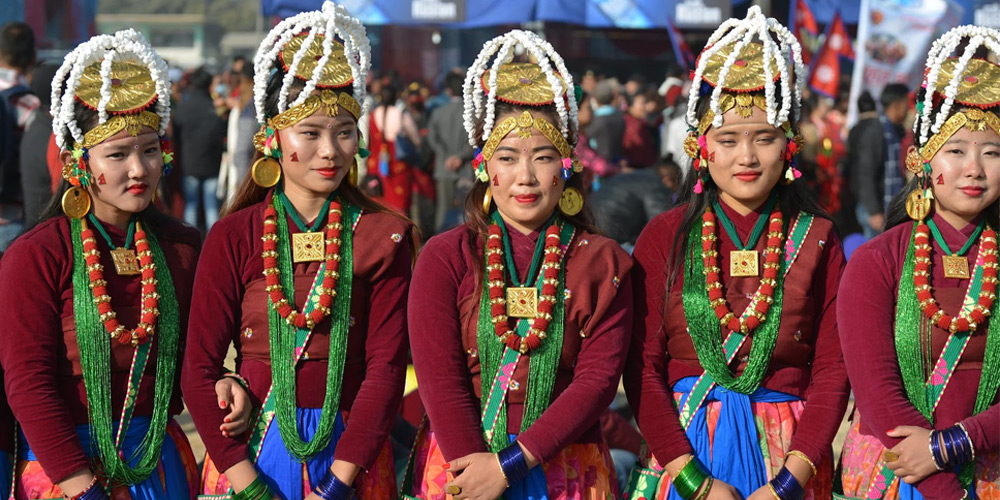
This grand fiesta, held in February, is the most important festival of the Sherpa community. Typically, the festival is features some of their most riveting performances of music and dance and traditional sacred rituals. The most intimate vignettes of Losar can be unspooled in the Khumbu region, home to many Sherpa settlements. In Kathmandu, you can observe these at the Boudhanath shrine.
Mani Rimdu Festival, Khumbu
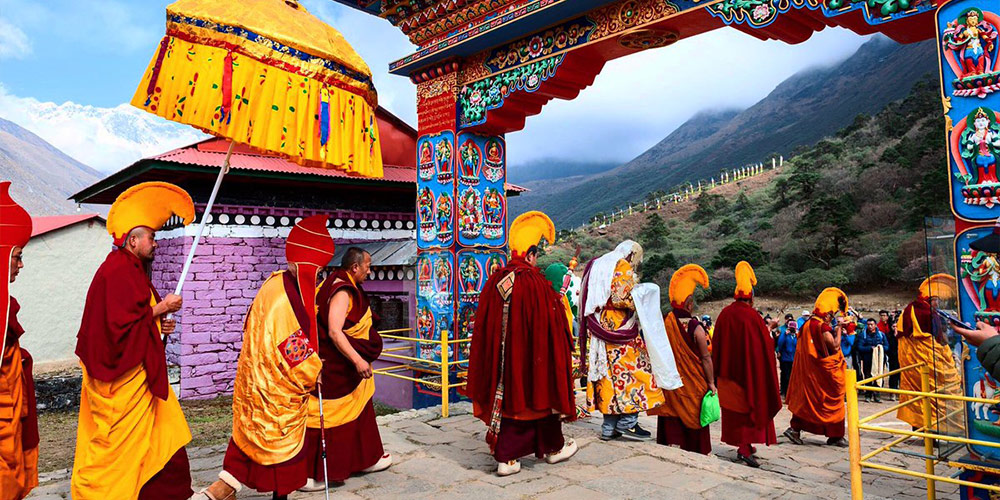
If you are heading to Everest Base Camp be sure to time it around the 19-day Mani Rimdu festival celebrated after the full moon day of the Dashain festival (October/ November) in the premises of the Tengboche’s Dawa Choling Gompa, which is a huge crowd puller for the Sherpa community and Buddhists from the surrounding region. The festival highlights the worship of Phakpa Chenrezig, the Buddha of Compassion and Dance; it also marks the establishment of Tibetan Buddhism by Guru Rinpoche Padmasambhava. Prior to the launch of the actual festivities, the monks, using colored sand, create a mandala symbolic of the Buddha and other deities. The Buddha of Compassion is the chief idol of Mani Rimdu. The chanting of fruitful mantras of blessings for all accompanies this ritual. During the opening public ceremony, Wong, or the empowerment ritual, is conducted with the monks distributing the small purified red pills, Mani Rilwu (sacred pills) and Tshereel (pills for long life) from the sacred bowl placed above the center of the mandala, to all who attend the festival. The festivities feature elaborately costumed and masked monks performing the chaam dances and rituals such as Ser Khyem, a tea offering to various deities including Yidam (personal deity), Khandro (wisdom dakini), Shi-Dak (Earth deities) and the Lama (spiritual guide); a dance dedicated to the Four Protecting Ghings, who defend the Buddhist faith and a ceremony for the God of Fire. When the festivities end, the mandala is dismantled by the monks; the sand is then offered to the serpent gods (nagas). The festivities wrap up with the Sherpas feasting, drinking and jollying the night away.
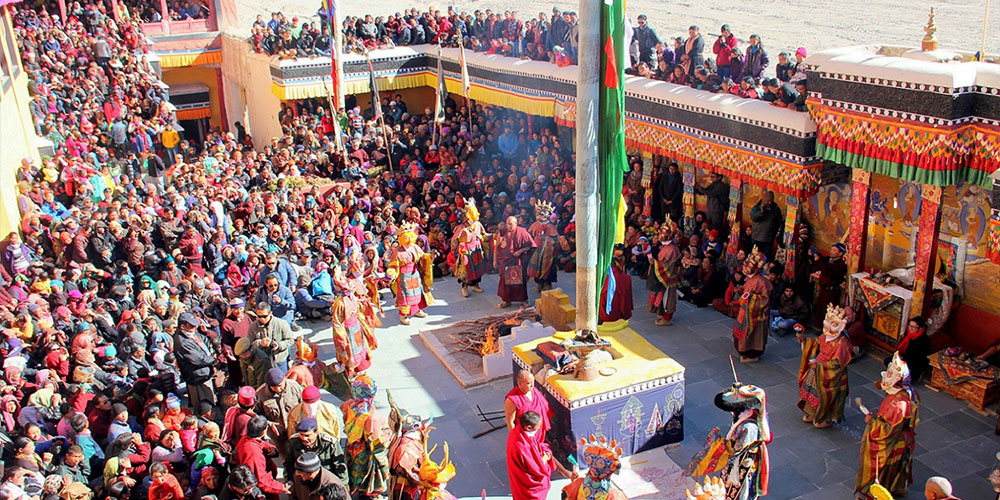
Other great places to watch the festivities, held in accordance with the Tibetan calendar, are the monasteries at Thame and Chiwong of the Everest region.
Tiji Festival, Upper Mustang
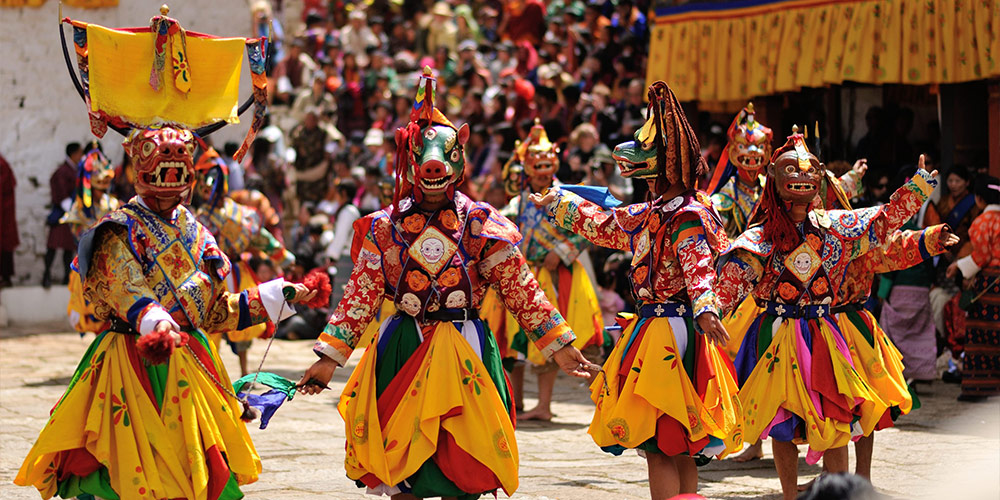
Nepal’s Mustang region adjoins the border area of Tibet in the Annapurna Conservation Area. The stunning otherworldly beauty of west Nepal’s Upper Mustang region makes it the dream destination of the trekking community. A great time to venture here to the ancient walled town of Lo Manthang is during the celebration of the 3-day Tibetan-Buddhist Tiji Festival (April/May) held at the Chöde Monastery. This ‘Demon chasing’ festival itself dates back to the 17th century. Moulded by the legend of the saving of Upper Mustang, formerly the Kingdom of Lo from a demon, the festivities are a riot of chaam dances and rituals conducted by the monks. Steeped in myths and local lore, the festival also celebrates the victory of Dorje Sonnu, an avatar of the Buddha, over the demon Man Tam Ru.
Yarthung Festival, Upper Mustang
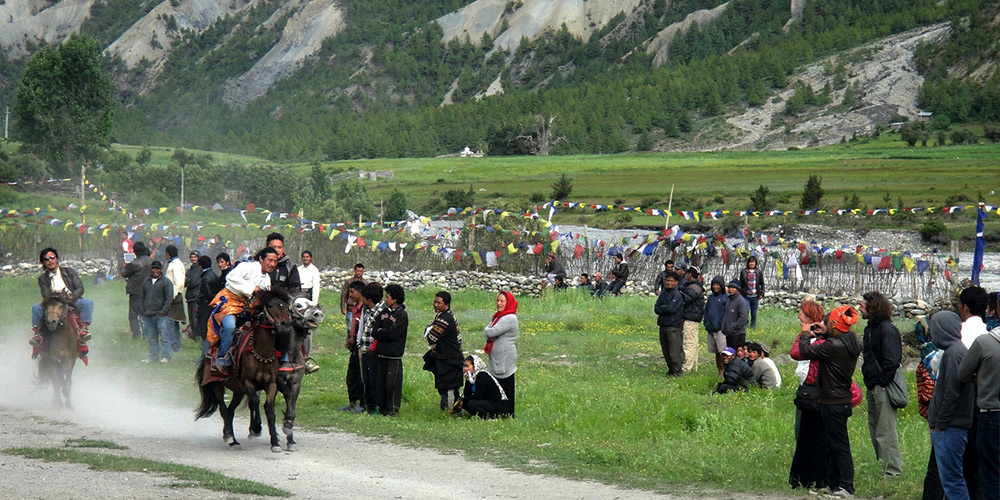
Considered one of the oldest mountain festivals in Nepal, the Yarthung festival is held at the end of summer, during the full moon of August/September at Lo-Manthang and Muktinath, in the Upper Mustang region. It’s a time when the Thakali and Gurung communities in the village settlements of the lower Mustang valley, step out in all their finery to celebrate stocking up of the rich harvest for the winter months and the return of their horses and livestock from the lush high pastures. The festivities are attended by the head lama who helps identify the most auspicious time for the celebrations, the village chieftains, monks, and the local populace. This is one of the most important cultural identities of the Thakali and Gurung villagers of Khinga, Jharkot and Ranipawa. Feasting and drinking and–their favourite, the traditional horse racing competition, spice up the event. Now football and archery competitions also add hype to the activities. Rituals of thanksgiving to the Buddha for a bountiful harvest mark the joyful occasion. Family members also take part in a horse riding ceremony to worship the deities. The Mustang region is home to the Thakali and Gurung communities, so the festivities include beautiful and dance performances from the Thakali and Tibetans in the area. Devotees from the Hindu community also arrive on this day in Mustang to worship at the Muktinath Temple.
Maghi Festival, Chitwan
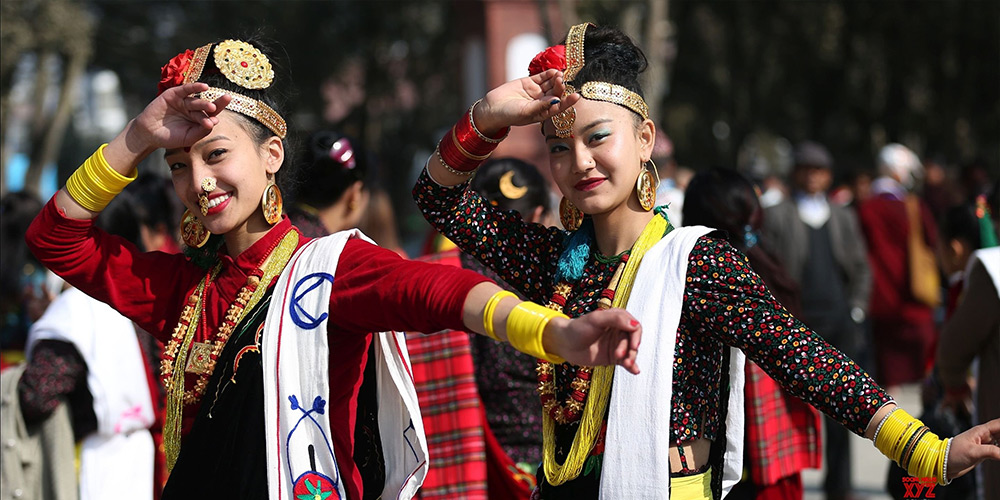
The biggest festival for Nepal’s Tharu community in the Terai region is Maghi, which falls on the same day as the Hindu festival of Makar Sankranti, 15th January. Maghi is the beginning of the Tharu New Year and also serves as their harvest festival. Be here for the weeklong festival for a deep dive into this cultural explosion of rituals, culinary discoveries, dance and music.
Nepal’s lesser known festivals offer a roller coaster ride to the culture buff. A little homework goes a long way, making splendid memories of this Himalayan world of grand possibilities of festive cheer.


